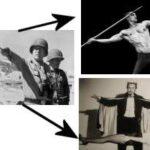For a business to advance from stage 2 to stage 3, the business undergoes a substantial shift from being on the offensive and growth-oriented to becoming more defensive and focused on process improvement through business segmentation. The business segmentation associated with stage 3 sets up the business for shared leadership and management by creating multiple divisions.
In stage 3, true leadership begins to migrate more towards management. At stage 3, humanistic motives are being replaced by profit and wealth motives. Rank is introduced; there are workers, supervisor, managers, and vice presidents. The culture is changed from one of unity for a single purpose to becoming more about individualism.
On one side of the organization is the operations department, which is focused inwardly. I call the people who work in the operations department the “athletes.” As in sports, business athletes are focused on doing one thing better than anyone else. Within the operations department, there are engineering athletes, manufacturing athletes, human resource athletes, and so on.
On the other side of the organization are the sales and marketing department. I call the people who work in the sales and marketing department “performers.” As with theater or screen performers, business performers are outwardly focused and focused on their audience.
Athletes share many traits of Generals and often take over a division using General type skills by improving production and increasing specialization. However, Athletes are more introverted than Generals. Athletes enjoy the actual work, are obsessed with measuring progress, and do not like spending time talking in meetings. They like to make decisions and act quickly. However, they recognize they are not visionaries and focus on execution. The chief Athlete is the President.
Performers are naturally more extroverted and often come from sales. Performers are convincing and enthusiastic communicators, feel more affinity towards the customer, and see their coworkers as obstacles to serving the customer. They love to keep score and are very competitive. Performers are often frustrated by the company’s lack of expansion and feel there is way too much paperwork. The chief Performer is the CEO.
In stage 3, Athletes and Performers take over for the general.

Henry Ford was a good example of a general that hung on too long and was surpassed by General Motors, a business that successfully transitioned to stage 3.
Is your business a stage 3 business?
Next post in the Series: Stage 4: The Guardians of Business












